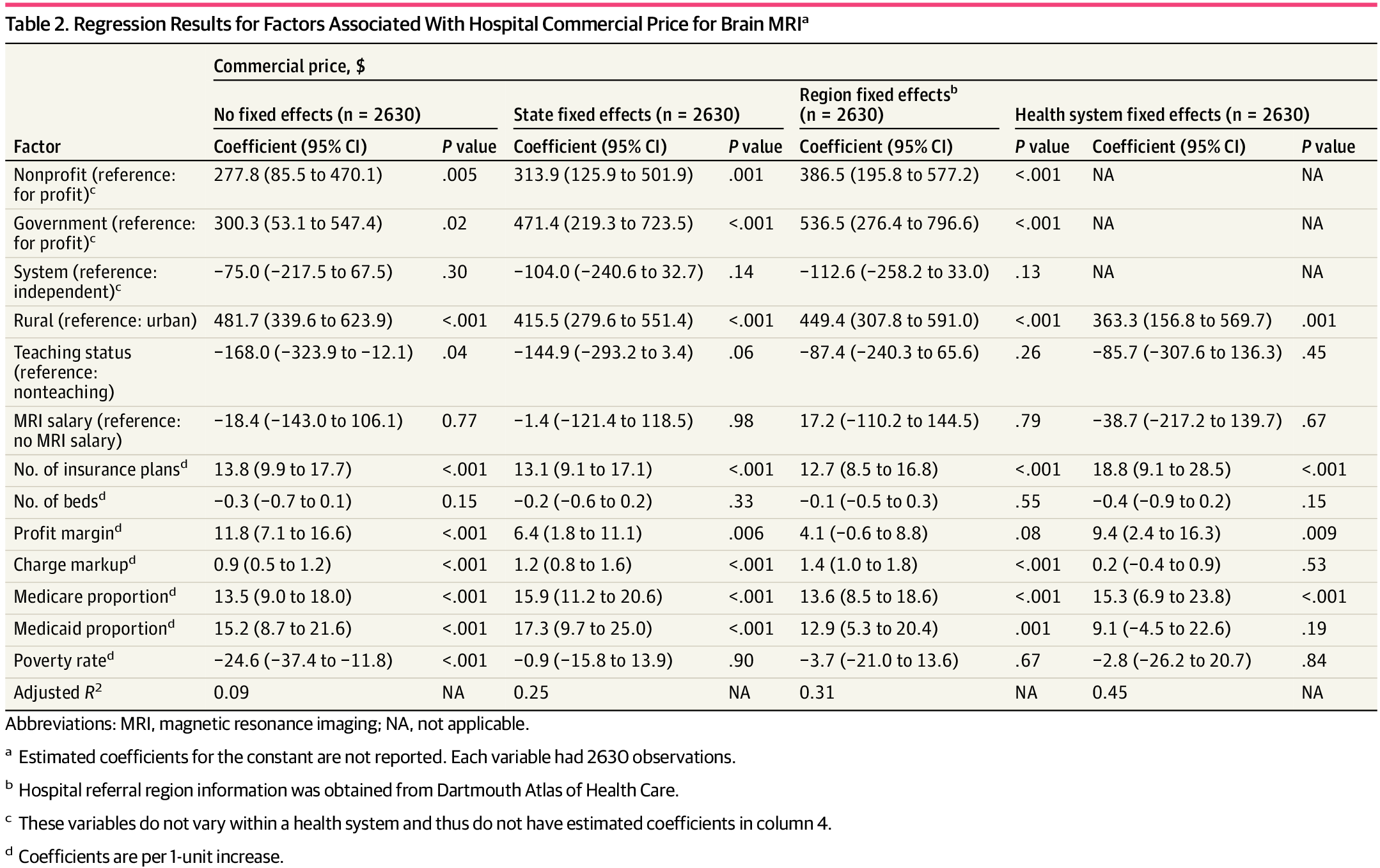A new study shows nonprofit and government hospitals have higher commercially negotiated prices for MRIs than for-profit hospitals.
A study published in JAMA Open Network examined negotiated rates under the price transparency rule and has identified the most expensive type of hospital to receive a brain MRI among those that complied with the rule as of June 13, 2022.
The study leveraged new data associated with commercially negotiated prices nationwide to compare commercial rates for MRIs of the brain before and after contrast reported with CPT® code 70553. According to the study, nonprofit and government hospitals had higher commercially negotiated prices for brain MRIs than for-profit hospitals.
“Across the nation and within the same state, referral region, or health system, hospitals located in rural areas, contracting with more health plans, or treating more Medicare patients had higher prices, potentially reflecting these hospitals’ stronger bargaining power compared with insurers in their local markets,” the study said.
The sample contained 2,630 hospitals and found the following:
- The median commercial price was $1,900 for nonprofit, system-affiliated hospitals in urban areas
- Prices at nonprofit and government hospitals were $387 and $537 higher than the prices at for-profit hospitals

Photo courtesy of JAMA study ‘Factors Associated With Hospital Commercial Negotiated Price for Magnetic Resonance Imaging of Brain’
Since the hospital price transparency regulation went into effect on January 1, 2021, hospitals are required to make public their standard charges for items and services through a consumer-friendly display showing at least 300 shoppable services, as well in a machine-readable file.
Hospitals were slow to adapt out of the gates. In an assessment of 235 randomly sampled hospitals conducted by CMS between January and February 2021, 66% met consumer-friendly display criteria, 30% posted a machine-readable file, and 27% did both.
Those figures improved significantly in CMS' second assessment, this time of 600 randomly sampled hospitals between September and November 2022. The analysis found 493 hospitals (82%) posted a consumer-friendly display, 490 (82%) posted a machine-readable file, and 421 (70%) did both.
Amanda Norris is the Director of Content for HealthLeaders.
